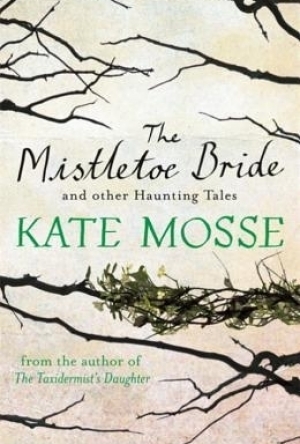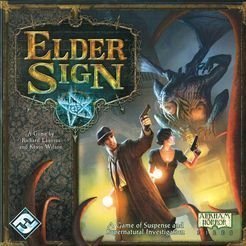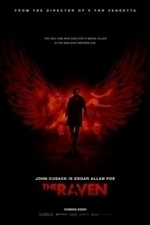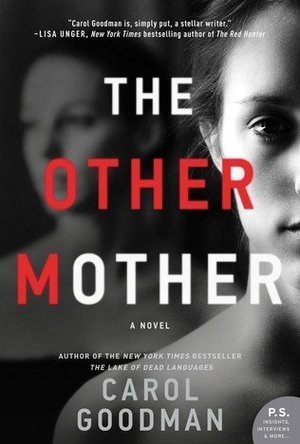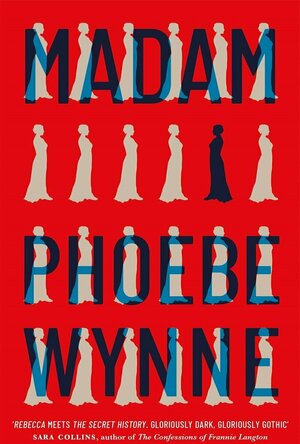Search
Louise (64 KP) rated The Mistletoe Bride and Other Haunting Tales in Books
Jul 2, 2018
I am not going to ramble on and on giving you a synopsis for all the stories but I will let you know some of the ones that I enjoyed the most out of this collection. I really wanted to start reading some more short stories so I have continuously made an effort in reading a collection per month. With each book there are obviously going to be some better than others. I think the hardest thing for the authors is to create a really good and atmospheric story that will truly grip you and Kate Mosse has certainly done that in some of these stories. Others were a bit weak and easily forgettable.
The stories included are:
The Mistletoe Bride – 4/5 stars
Duet – 3.5/5 stars
Red Letter day – 2.5/5 stars
The drowned village – 3/5 stars
The house on the hill – 3/5 stars
Why the yew tree lives so long -1.5/5stars
Sainte-Therese – 3/5 stars
The ship of the dead -4/5 stars
La Fille de Melisande -2/5 stars
The revenant -5/5 star – FAVOURITE
On Harting hill -3.5/5 stars
The princess Alice -3/5 stars
In the Theatre at night 2.5/5 stars
The yellow scarf -3.5/5 stars
Syrinx 1/5 stars
Each of these stories comes with an authors note as what inspired her to write them. There are also some black and white gothic illustrations before each of the stories drawn by Rohan Daniel Eason which sets the tone. The stories are set in Sussex, Brittany and Languedoc that are based on Folk tales ranging from the 1800’s to the present day.
I will admit as writing this review I had to check the stories again to see which ones were which as they are somewhat forgettable. The ones that have clearly stuck with me is ‘The Mistletoe Bride’, ‘Duet’ and ‘The Revenant’.
The revenant was the best story by far in the book, it was eerie and creepy and had me on the edge of my seat with my pulse racing as I was actually scared but couldn’t stop reading. It is probably one of the scariest short stories that I have read! Mosse manages to create an intense atmosphere and completely grips the reader. The writing style is very easy to read and flows beautifully.
I would recommend this to people who are looking to read some short-stories that have historical fiction with supernatural elements and a bit of horror.
Overall I rated this 3.5/5 stars
The stories included are:
The Mistletoe Bride – 4/5 stars
Duet – 3.5/5 stars
Red Letter day – 2.5/5 stars
The drowned village – 3/5 stars
The house on the hill – 3/5 stars
Why the yew tree lives so long -1.5/5stars
Sainte-Therese – 3/5 stars
The ship of the dead -4/5 stars
La Fille de Melisande -2/5 stars
The revenant -5/5 star – FAVOURITE
On Harting hill -3.5/5 stars
The princess Alice -3/5 stars
In the Theatre at night 2.5/5 stars
The yellow scarf -3.5/5 stars
Syrinx 1/5 stars
Each of these stories comes with an authors note as what inspired her to write them. There are also some black and white gothic illustrations before each of the stories drawn by Rohan Daniel Eason which sets the tone. The stories are set in Sussex, Brittany and Languedoc that are based on Folk tales ranging from the 1800’s to the present day.
I will admit as writing this review I had to check the stories again to see which ones were which as they are somewhat forgettable. The ones that have clearly stuck with me is ‘The Mistletoe Bride’, ‘Duet’ and ‘The Revenant’.
The revenant was the best story by far in the book, it was eerie and creepy and had me on the edge of my seat with my pulse racing as I was actually scared but couldn’t stop reading. It is probably one of the scariest short stories that I have read! Mosse manages to create an intense atmosphere and completely grips the reader. The writing style is very easy to read and flows beautifully.
I would recommend this to people who are looking to read some short-stories that have historical fiction with supernatural elements and a bit of horror.
Overall I rated this 3.5/5 stars
Matthew Krueger (10051 KP) rated Elder Sign in Tabletop Games
Jul 17, 2020 (Updated Jul 18, 2020)
The Theme (3 more)
Solo Gameplay
The Setting
High Replayabity
Little Pieces, Easy to lose (1 more)
Luck of the dice
Call of Cthulhu
Elder Sign- is a excellent fantasy adventure, horror card game. I learn about this game through Tabletop. And to me it looked really good. And plus you can play it solo. So i had to buy it, cause of the solo experience. I only played this solo and its fun, but hard to win. I love the theme of the game which is based on the Cthulhu Mythos of horror writer H.P. Lovecraft and Chaosium's Call of Cthulhu roleplaying game. I love both H.P. Lovecraft, and Cthulhu. If you don't know what Elder Sign is I will explain it.
Elder Sign- is a cooperative card and dice game, based on the Cthulhu Mythos of horror writer H.P. Lovecraft and Chaosium's Call of Cthulhu roleplaying game. It is published by Fantasy Flight Games, which also produces the Cthulhu Mythos games Arkham Horror, Call of Cthulhu: The Card Game, Mansions of Madness, and Eldritch Horror.
Gameplay:
Players randomly select a monster (known as an Ancient One) to oppose. The Ancient One requires a certain number of elder sign tokens to "seal" or imprison it. Conversely, the Ancient One can be "awakened" or released by a number of doom tokens.
There are also many other less powerful monsters that can appear during the game.
Each player chooses an investigator to play as (usually randomly), each investigator having unique abilities.
Players take turns exploring a randomly generated room (there are Adventure cards and Other World cards). If a player succeeds at completing all of the tasks in the room they are exploring, they obtain a reward. Conversely, if they fail, they receive a penalty. If the player's investigator is devoured (either by losing all of their stamina and/or sanity), they lose what they originally had, a doom token is added to the doom track, and the player returns to play as a different investigator.
Rooms are explored until either the Ancient One is "sealed" or "awakened". If the Ancient One is sealed, the players immediately win. If the Ancient One awakens, the players must face it in battle. This battle is designed to be extremely difficult with a low chance of success, so players must try to prevent the Ancient One from awakening at all costs.
Its a excellent gothic horror game, it has fantasy, dice, cards and adventure and alot of replayablity. Buy it if you havent already. Cause its excellent.
Elder Sign- is a cooperative card and dice game, based on the Cthulhu Mythos of horror writer H.P. Lovecraft and Chaosium's Call of Cthulhu roleplaying game. It is published by Fantasy Flight Games, which also produces the Cthulhu Mythos games Arkham Horror, Call of Cthulhu: The Card Game, Mansions of Madness, and Eldritch Horror.
Gameplay:
Players randomly select a monster (known as an Ancient One) to oppose. The Ancient One requires a certain number of elder sign tokens to "seal" or imprison it. Conversely, the Ancient One can be "awakened" or released by a number of doom tokens.
There are also many other less powerful monsters that can appear during the game.
Each player chooses an investigator to play as (usually randomly), each investigator having unique abilities.
Players take turns exploring a randomly generated room (there are Adventure cards and Other World cards). If a player succeeds at completing all of the tasks in the room they are exploring, they obtain a reward. Conversely, if they fail, they receive a penalty. If the player's investigator is devoured (either by losing all of their stamina and/or sanity), they lose what they originally had, a doom token is added to the doom track, and the player returns to play as a different investigator.
Rooms are explored until either the Ancient One is "sealed" or "awakened". If the Ancient One is sealed, the players immediately win. If the Ancient One awakens, the players must face it in battle. This battle is designed to be extremely difficult with a low chance of success, so players must try to prevent the Ancient One from awakening at all costs.
Its a excellent gothic horror game, it has fantasy, dice, cards and adventure and alot of replayablity. Buy it if you havent already. Cause its excellent.

Radio Pro HQ
Music and Entertainment
App
"Radio Pro HQ" is a modern internet radio receiver that enables you to listen lots of internet radio...
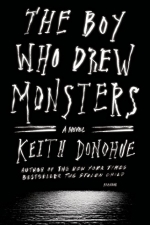
The Boy Who Drew Monsters
Book
From the New York Times bestselling author of The Stolen Child comes a hypnotic literary horror...
Connor Sheffield (293 KP) rated The Raven (2012) in Movies
Apr 27, 2017
A brilliant crime thriller (4 more)
Gory
Connections to the work of Edgar Allan Poe
Great Cast
Watchable over and over again
Would love to know what happens in the end (1 more)
Not as exhilirating after the first watch
Quote the Raven, Nevermore.
First of all let me say this;
I am a poet and a writer, and my biggest inspiration as a writer has always been Edgar Allan Poe. I love the gothic horror, the tragedy, the macabre, and everything that makes Edgar Allan Poe the legend he is today.
With that said, let me tell you why I love this movie. It involves connections to some of Poe's greatest work, and not his poetry necessarily, it's actually more about his stories. Telltale Heart, Pit and the Pendulum and others that are all combined into the twisted mind of our antagonist who uses these stories to commit his crimes and leave evidence behind that only Poe himself would be able to figure out.
It's a brilliant crime thriller that delves into the mind of someone who is essentially Poe's biggest fan, but in a very dark and twisted way that gives us a fictional story about what happened during Poe's last days before he was found dead on a park bench. It's a known fact that Poe's last days remain a mystery and so this film had the opportunity to really play with some great ideas and they were executed brilliantly.
Speaking of execution this film is very grim and gory. One scene involving the story of The Pit and the Pendulum has us watch as a Pendulum drops lower and lower before slicing through a man's stomach like a warm knife through butter. It doesn't leave a lot to the imagination which gives this film some charm and makes it stand out from the rest of the Poe Film adaptations.
John Cusack plays the lengend himself, Edgar Allan Poe and brings a very interesting performance, that seems to suggest Poe thought himself as a higher intelligence to those around him, and he isn't shy to announce it.
Sharing the screen with Cusack, includes names such as Luke Evans who portrays Detective Fields, the detective I mentioned earlier that seeks Poe's assistance in the murder case. Brendan Gleeson portrays a very protective father named Charles Hamilton, who despises Poe being anywhere near his daughter Emily Hamilton, portrayed by Alice Eve. However there differences are put aside as the hunt for the missing Emily continues.
The story transitions well from scene to scene and story to story as each clue leads to the next, and eventually we discover the culprit who I shall not name here because I wish to leave the tension and suspense for you as you watch this film.
I am a poet and a writer, and my biggest inspiration as a writer has always been Edgar Allan Poe. I love the gothic horror, the tragedy, the macabre, and everything that makes Edgar Allan Poe the legend he is today.
With that said, let me tell you why I love this movie. It involves connections to some of Poe's greatest work, and not his poetry necessarily, it's actually more about his stories. Telltale Heart, Pit and the Pendulum and others that are all combined into the twisted mind of our antagonist who uses these stories to commit his crimes and leave evidence behind that only Poe himself would be able to figure out.
It's a brilliant crime thriller that delves into the mind of someone who is essentially Poe's biggest fan, but in a very dark and twisted way that gives us a fictional story about what happened during Poe's last days before he was found dead on a park bench. It's a known fact that Poe's last days remain a mystery and so this film had the opportunity to really play with some great ideas and they were executed brilliantly.
Speaking of execution this film is very grim and gory. One scene involving the story of The Pit and the Pendulum has us watch as a Pendulum drops lower and lower before slicing through a man's stomach like a warm knife through butter. It doesn't leave a lot to the imagination which gives this film some charm and makes it stand out from the rest of the Poe Film adaptations.
John Cusack plays the lengend himself, Edgar Allan Poe and brings a very interesting performance, that seems to suggest Poe thought himself as a higher intelligence to those around him, and he isn't shy to announce it.
Sharing the screen with Cusack, includes names such as Luke Evans who portrays Detective Fields, the detective I mentioned earlier that seeks Poe's assistance in the murder case. Brendan Gleeson portrays a very protective father named Charles Hamilton, who despises Poe being anywhere near his daughter Emily Hamilton, portrayed by Alice Eve. However there differences are put aside as the hunt for the missing Emily continues.
The story transitions well from scene to scene and story to story as each clue leads to the next, and eventually we discover the culprit who I shall not name here because I wish to leave the tension and suspense for you as you watch this film.
Kristy H (1252 KP) rated The Other Mother in Books
Apr 10, 2018
Twisty psychological thriller
When Daphne flees her home, taking very little but her six-month-old daughter, Chloe, she isn't sure what to expect. She's leaving everything behind (including her controlling husband) to work for one of her favorite authors, Schuyler, as an archivist. She'll be living in the shadow of a mental hospital, which Schulyer's late father ran for many years. Daphne hopes this will be a new start and a way to escape both her husband and the dark moods, diagnosed as postpartum mood disorder, she felt when Chloe was born. She'll also miss her friend, Laurel, with whom she formed a tight bond after meeting in a mother's group.
Get ready: this book is a crazy, bewildering ride. It will also always have the distinction of being the novel I was reading on an airplane trip to San Diego when one of my five-year-old daughters threw up. Twice. So it will be memorable in several ways. :)
If you're looking for an easy, linear psychological thriller, this one may not be for you. This novel is confusing and crazy and makes you question everything you're reading. But it's an exciting, twisty thriller and a great, fast read (and a welcome distraction from vomiting children). Most of it is told in current-day descriptions from Daphne, along with excerpts from her journal from her postpartum mothers group. As Daphne meets her new boss, Schuyler, and becomes fascinated with a patient of her father's, Edith, we also eventually hear from Edith and excerpts from Edith's journal, too. The entire result is a wonderful, twisted, tale that has you frantically turning pages, trying to work things out and figure out who is who and what the heck is going on.
I don't want to reveal too much, as it's best going in without too many preconceived notions. The novel has a bit of gothic in it, as many of Goodman's do, with the mental hospital looming in the background. The idea of postpartum depression and motherhood is a theme running throughout, as well.
Overall, even though I was sometimes frustrated as I tried to work through this one, I wound up enjoying it. I was impressed at how things came together and enjoyed the wild ride I was on. I've loved Goodman since The Lake of Dead Languages and find myself looking forward to each new novel she releases. This one was different, but I was quite caught up in its characters and dark themes. Definitely worth a read.
I received a copy of this novel from the publisher and Librarything in return for an unbiased review (thank you!).
Get ready: this book is a crazy, bewildering ride. It will also always have the distinction of being the novel I was reading on an airplane trip to San Diego when one of my five-year-old daughters threw up. Twice. So it will be memorable in several ways. :)
If you're looking for an easy, linear psychological thriller, this one may not be for you. This novel is confusing and crazy and makes you question everything you're reading. But it's an exciting, twisty thriller and a great, fast read (and a welcome distraction from vomiting children). Most of it is told in current-day descriptions from Daphne, along with excerpts from her journal from her postpartum mothers group. As Daphne meets her new boss, Schuyler, and becomes fascinated with a patient of her father's, Edith, we also eventually hear from Edith and excerpts from Edith's journal, too. The entire result is a wonderful, twisted, tale that has you frantically turning pages, trying to work things out and figure out who is who and what the heck is going on.
I don't want to reveal too much, as it's best going in without too many preconceived notions. The novel has a bit of gothic in it, as many of Goodman's do, with the mental hospital looming in the background. The idea of postpartum depression and motherhood is a theme running throughout, as well.
Overall, even though I was sometimes frustrated as I tried to work through this one, I wound up enjoying it. I was impressed at how things came together and enjoyed the wild ride I was on. I've loved Goodman since The Lake of Dead Languages and find myself looking forward to each new novel she releases. This one was different, but I was quite caught up in its characters and dark themes. Definitely worth a read.
I received a copy of this novel from the publisher and Librarything in return for an unbiased review (thank you!).
JT (287 KP) rated The Raven (2012) in Movies
Mar 10, 2020
I've never really been a massive fan of John Cusack, I find him a bit tenuous and someone who slightly over acts. The Raven gives him the chance to over act to his heart’s content, as he plays poet Edgar Allan Poe who is drawn into the world and mind of a serial killer.
The film is set in 18th century Maryland where the flamboyant Edgar Allan Poe is busy churning out poems and gruesome stories that he desperately tries to get published in the local paper, although frustratingly as he experiences no one really knows or cares who he is?
This leads to large quantities of booze and lots of shouting and aggression at anyone who stands in his way. When a series of killings alert the local police, Detective Fields (Luke Evans) is called in to investigate, and when it’s discovered that the killings are in some way a copy of Poe’s illustrious work the man himself is tasked with assisting.
Visually the film is very good and is in keeping with the traditions of the 18th century, dark and slightly gothic it certainly gives the sense of a disturbed horror film. The killer is masked for the majority until the reveal, but clues are dropped as to the identity giving the viewer the chance to play detective. Although you probably don’t need to be Inspector Morse to figure it out.
When Poe’s beloved fiancé Emily Hamilton (Alice Eve) is kidnapped and buried alive it adds a whole new twist to the plot. The killer is making this a personal vendetta against Poe who seems at a loss to who could be targeting him in such a horrific way, it then becomes a race against time as the killer leaves clues on his victims for Poe to follow that will lead him to a theatrical conclusion.
The film echos Se7en, in that both Fields and Poe are being taunted by a sadistic killer who is clearly making a bold statement with his work, that involve a huge swinging blade, being buried into a wall and having your tongue cut out. Also a young beautiful woman is at the killers mercy, can Poe race against time to save her?
Cusack does an admirable job in fairness to him and his portrayal of Poe is an accurate reincarnation. Brendan Gleeson who despite limited screen time still manages to command a presence that has to be respected, and here as Emily’s father he gives off a burning sense of desperation.
The rest of the cast amble a long and certainly don’t set any fires alight It’s an OK film and it does have the thrills but nothing that is going to set pulses racing. When you turn it off you just let out one big long “Meh!”
The film is set in 18th century Maryland where the flamboyant Edgar Allan Poe is busy churning out poems and gruesome stories that he desperately tries to get published in the local paper, although frustratingly as he experiences no one really knows or cares who he is?
This leads to large quantities of booze and lots of shouting and aggression at anyone who stands in his way. When a series of killings alert the local police, Detective Fields (Luke Evans) is called in to investigate, and when it’s discovered that the killings are in some way a copy of Poe’s illustrious work the man himself is tasked with assisting.
Visually the film is very good and is in keeping with the traditions of the 18th century, dark and slightly gothic it certainly gives the sense of a disturbed horror film. The killer is masked for the majority until the reveal, but clues are dropped as to the identity giving the viewer the chance to play detective. Although you probably don’t need to be Inspector Morse to figure it out.
When Poe’s beloved fiancé Emily Hamilton (Alice Eve) is kidnapped and buried alive it adds a whole new twist to the plot. The killer is making this a personal vendetta against Poe who seems at a loss to who could be targeting him in such a horrific way, it then becomes a race against time as the killer leaves clues on his victims for Poe to follow that will lead him to a theatrical conclusion.
The film echos Se7en, in that both Fields and Poe are being taunted by a sadistic killer who is clearly making a bold statement with his work, that involve a huge swinging blade, being buried into a wall and having your tongue cut out. Also a young beautiful woman is at the killers mercy, can Poe race against time to save her?
Cusack does an admirable job in fairness to him and his portrayal of Poe is an accurate reincarnation. Brendan Gleeson who despite limited screen time still manages to command a presence that has to be respected, and here as Emily’s father he gives off a burning sense of desperation.
The rest of the cast amble a long and certainly don’t set any fires alight It’s an OK film and it does have the thrills but nothing that is going to set pulses racing. When you turn it off you just let out one big long “Meh!”
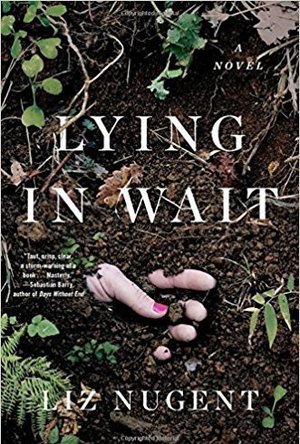
Lying in Wait
Book
Sunday Times Top 10 Bestseller! Featured in the Richard and Judy Spring 2017 Book Club 'Gone Girl...
BookInspector (124 KP) rated Madam in Books
Jul 1, 2021
The protagonist in this novel is Rose, and this story is told from her perspective. Rose is a very well educated Latin teacher that comes to a new, well-known school, but being a child of a very active feminist, stuck in a school that has very old and very strange traditions drives her “crazy”. I could not connect to Rose, I respected her thoughts, but she had no idea what she got herself into, and that made her look stupid. I missed student’s perspectives in this book. I think a student protagonist would have made this book way more interesting and absorbing, they definitely have a lot to tell.
I found the narrative of this book mysterious and very enjoyable. Rose is trying to find out more about the events happening in this school, but everything is so secretive, she gets only bits of information. I am not surprised she feels so frustrated. All of that creates a perfect mystery and suspense because I was so keen to find out, what was actually happening there. This book has plenty of issues to be discussed. It portrays only Rose’s perspective, she is from a lower class and has no idea how rich and influential people operate. So what seems outrageous to her, might seem very normal to rich people. I really enjoyed the ancient mythology that was in this novel, I loved the stories of powerful women from the past. The topics discussed in this book are arranged marriages, suicide, mental health issues, ignorance, friendships, homosexuality, teenage manipulations, lack of feminism, various secrets, and many, many more. This novel really highlights a very wide variety of topics.
The whole story is set in 1993, so it does show the struggles people had during those days, especially when it comes to technologies and communication. I enjoyed the writing style of this book, it was very atmospheric and dark. I really can see this novel as a film, it would be brilliant! The chapters of this book have medium length and it had me very engrossed in this story. I don’t really know what I think of the ending, it rounds up the story nicely, but for some reason, it didn’t really leave me satisfied.
So, to conclude, it is a very gloomy and dark novel, filled with unique characters and a plot filled with secrets and mystery. This book is perfect for discussions, it has a very wide variety of topics. I think it would be great for reading groups or readalongs. I would recommend it to anyone who enjoys gothic novels, or books set in strange boarding schools.
I found the narrative of this book mysterious and very enjoyable. Rose is trying to find out more about the events happening in this school, but everything is so secretive, she gets only bits of information. I am not surprised she feels so frustrated. All of that creates a perfect mystery and suspense because I was so keen to find out, what was actually happening there. This book has plenty of issues to be discussed. It portrays only Rose’s perspective, she is from a lower class and has no idea how rich and influential people operate. So what seems outrageous to her, might seem very normal to rich people. I really enjoyed the ancient mythology that was in this novel, I loved the stories of powerful women from the past. The topics discussed in this book are arranged marriages, suicide, mental health issues, ignorance, friendships, homosexuality, teenage manipulations, lack of feminism, various secrets, and many, many more. This novel really highlights a very wide variety of topics.
The whole story is set in 1993, so it does show the struggles people had during those days, especially when it comes to technologies and communication. I enjoyed the writing style of this book, it was very atmospheric and dark. I really can see this novel as a film, it would be brilliant! The chapters of this book have medium length and it had me very engrossed in this story. I don’t really know what I think of the ending, it rounds up the story nicely, but for some reason, it didn’t really leave me satisfied.
So, to conclude, it is a very gloomy and dark novel, filled with unique characters and a plot filled with secrets and mystery. This book is perfect for discussions, it has a very wide variety of topics. I think it would be great for reading groups or readalongs. I would recommend it to anyone who enjoys gothic novels, or books set in strange boarding schools.

Radio HQ (lite version)
Music and Entertainment
App
"Radio HQ (lite version)" is a modern internet radio receiver that enables you to listen lots of...
